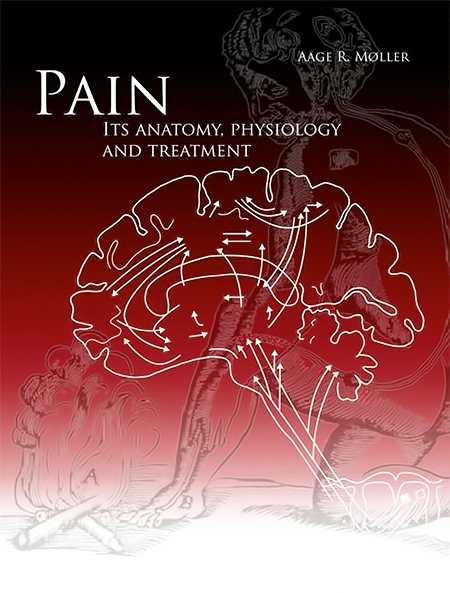PAIN
Its Anatomy, Physiology and Treatment
Pain seems pretty straightforward in most situations: injure some part of the body and it will complain bothersomely until it has a chance to heal. But why does an ailing heart sometimes create shoulder pain? How do amputees experience pain in their missing limbs? When is pain found in the body and when is it in the mind?
Aage R. Møller provides scientific answers to these questions and more in this comprehensive textbook on the many manifestations of pain. Pain: Its Anatomy, Physiology and Treatment reflects Møller’s decades of experience as a professor of neurology in his native Sweden, as well as in the United States at the University of Pittsburgh and the University of Texas at Dallas.
Writing mainly for an academic audience, Møller divides his text into distinct sections dealing with two classes of pain: physiological and pathological. Each class is then broken down into dense, information-packed chapters that present the medical material in several ways. Student understanding is surely reinforced by the tables, diagrams, and illustrations that accompany the precise language of the text. Møller also provides a succinct abstract of each chapter and a thorough set of references. The structure, with its repetition of key concepts in a variety of formats, seems tailor-made for a student attempting to absorb the complex concepts.
Møller explores the differences between physiological and pathological pain and the causes, symptoms, and treatment options associated with each. He also delineates the pain receptors activated in each instance. While physiological pain caused by tissue trauma, for instance, involves direct activation of receptors, pathological pain does not. Instead, pathological pain reflects changes in receptors in the brain and spinal column, changes that Møller attributes to neural plasticity. He provides an in-depth appendix on this specific topic for interested readers.
Møller has published over a dozen books and hundreds of scientific papers. In this project, he aims to appeal to pain patients as well as students. Patients can definitely benefit from the lists of treatments and their relative effectiveness. Still, Møller always returns to the detailed language of science, which can leave the average reader a bit bewildered. A glossary defining terms like “vagus afferents” would be a welcome addition.
Appropriate for use in a college classroom, Pain: Its Anatomy, Physiology and Treatment provides an intensive introduction to a complex subject.
Reviewed by
Sheila M. Trask
Disclosure: This article is not an endorsement, but a review. The publisher of this book provided free copies of the book and paid a small fee to have their book reviewed by a professional reviewer. Foreword Reviews and Clarion Reviews make no guarantee that the publisher will receive a positive review. Foreword Magazine, Inc. is disclosing this in accordance with the Federal Trade Commission’s 16 CFR, Part 255.

